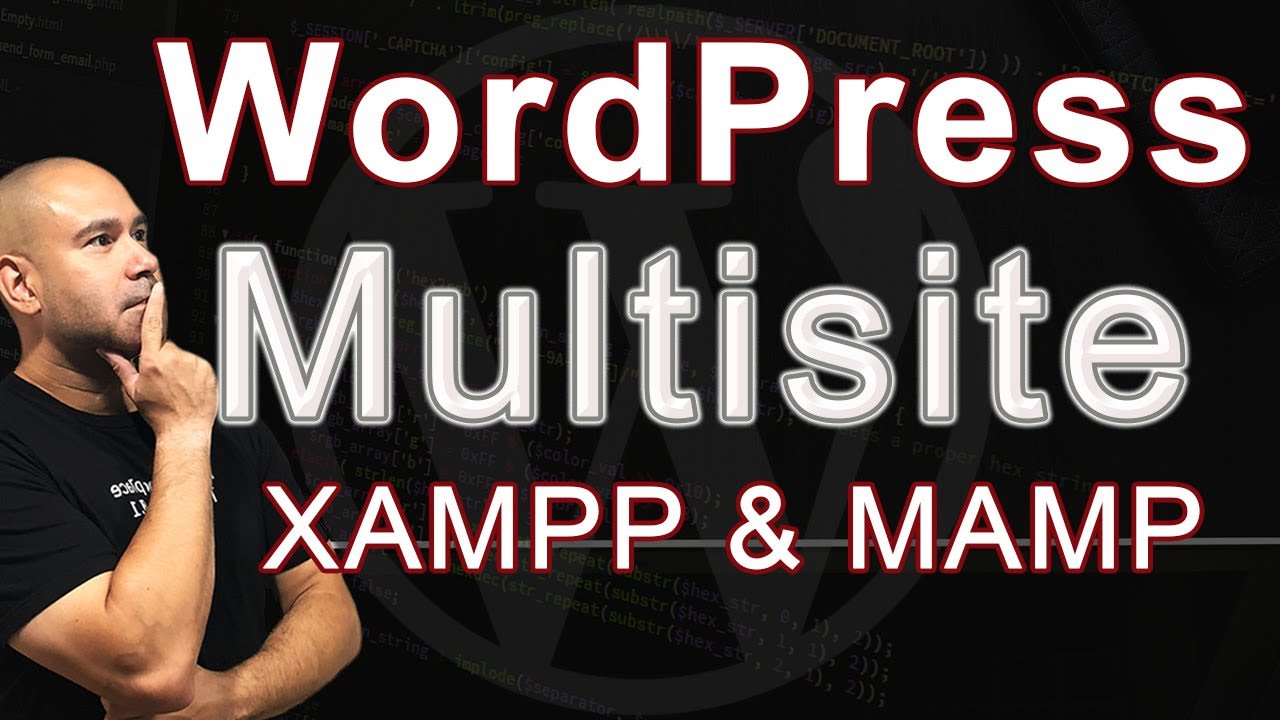WordPress Multisite: An Effective Tool for Developers and Freelancers
The WordPress Multisite network offers a powerful solution for WordPress Developers, freelancers, and entrepreneurs seeking to manage multiple websites efficiently. It provides an easy way to handle all sites from a single WordPress installation, thereby saving time, resources, and increasing potential revenue. It’s particularly beneficial for developers working with realtors, local businesses, and bloggers who often need to manage numerous websites.
This article will discuss WordPress Multisite in detail, how to install it locally using XAMPP on Windows and MAMP on macOS, and its benefits for developers and freelancers.
If you prefer watching a walk through video, then check out this WordPress Multisite Installation Tutorial.
What is WordPress Multisite?
WordPress Multisite is a feature that allows you to create a network of sites within a single WordPress installation. It’s similar to creating your own version of WordPress.com, where users can create their own blogs under your network. Each site within a Multisite setup can have its own themes, plugins, and users, yet they all share the same WordPress core files, plugins, and themes.
Benefits of WordPress Multisite
WordPress Multisite has several advantages, especially for developers, freelancers, and anyone looking to generate recurring revenue.
1. Centralized Management: WordPress Multisite simplifies management by allowing you to control all your sites from a single dashboard. You can update the WordPress core, plugins, and themes across all your sites at once.
2. User Management: You can create a new user for the network or give existing users access to any site. This is beneficial for organizations where multiple users need access to multiple sites.
3. Themes and Plugins: Multisite allows you to install plugins and themes network-wide. This means that you can save on premium plugins or themes by purchasing a single license and using them across all sites.
4. Scalability: If you’re managing multiple WordPress websites, Multisite allows you to expand your network as much as you need, without dealing with numerous separate WordPress installations.
5. Economical: For developers and freelancers, Multisite can help create a recurring revenue stream. You can offer your clients website maintenance and hosting services. Since you’re managing all sites from a single network, it’s more cost-effective and time-saving.
6. Ideal for Specific Niche: Developers who regularly build websites for realtors, local businesses, and bloggers can preconfigure the settings, plugins, and themes specific to those markets. This makes launching new sites quicker and more efficient.
How to Use WordPress Multisite Locally?
Testing your Multisite network locally before launching is a good practice. This can be done using local server solutions like XAMPP for Windows and MAMP for macOS.
Installing WordPress Multisite Locally Using XAMPP (Windows)
1. Install XAMPP: Download and install from the XAMPP official website. XAMPP includes Apache, MySQL, and PHP, which are essential for running a local server.
2. Create a New Database: Launch XAMPP, start Apache and MySQL, then click on Admin for MySQL. This opens PHPMyAdmin where you can create a new database for your Multisite network.
3. Install WordPress: Download WordPress from the official site, extract the zip file and move it to XAMPP’s htdocs folder (typically located in C:/xampp/htdocs/). Rename the WordPress folder to your preferred site name.
4. Edit wp-config.php: Locate wp-config-sample.php in your new WordPress folder, rename it to wp-config.php, and edit it to include your database details (database name, username, and password).
5. Install WordPress Multisite: Open your preferred web browser, enter “http://localhost/[your site name]” in the address bar. Follow the WordPress installation instructions.
6. Enable Multisite Network: To enable the Multisite feature, you need to add the following line to your wp-config.php file just before /* That’s all, stop editing! Happy blogging. */:
define( 'WP_ALLOW_MULTISITE', true );
7. Configure Network Settings: Refresh your browser, go to your WordPress dashboard and click on “Tools” -> “Network Setup”. Follow the instructions to complete the network setup.
Installing WordPress Multisite Locally Using MAMP (macOS)
1. Install MAMP: Download and install MAMP from the official website.
2. After you install MAMP, start the program and you will need to change the ports used. Click on preferences, then Ports, and change them to 80 & 3306.
3. Create a New Database: Open MAMP, start the servers, and then click on “Open WebStart page”. Click on Tools -> phpMyAdmin and create a new database.
4. Install WordPress: Download WordPress, extract the zip file and move it to MAMP’s htdocs folder (typically located in /Applications/MAMP/htdocs/). Rename the WordPress folder to your preferred site name.
5. Edit wp-config.php: Proceed as described in the XAMPP instructions Step number 6 by adding this snippet of code to your wp-config file just before /* That’s all, stop editing! Happy blogging. */:
define( 'WP_ALLOW_MULTISITE', true );
6. Install WordPress Multisite: Open your browser and enter “http://localhost/[your site name]” in the address bar and follow the WordPress installation instructions.
7. Enable Multisite Network: Follow the same steps as described in the XAMPP instructions.
8. Configure Network Settings: Refresh your browser, go to your WordPress dashboard and click on “Tools” and then “Network Setup”. Follow the instructions to complete the network setup.
Conclusion
WordPress Multisite offers a multitude of benefits for developers, freelancers, and entrepreneurs. It not only streamlines management but also paves the way for recurring revenue opportunities. While there may be a learning curve involved in mastering WordPress Multisite, the potential rewards make the investment of time and energy well worthwhile.
If you ever need to uninstall multisite, checkout this video on how to uninstall WordPress Multisite.
